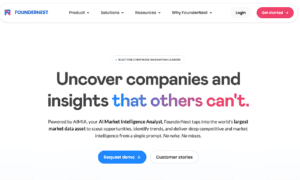DevOps engineer reveals practical methods that cut deployment time by 70% and enabled multi-state business expansion
The DevOps market is expected to grow from $10.4 billion in 2023 to $25.5 billion by 2028, according to industry analysis by MarketsandMarkets, while 99% of organizations implementing these practices report positive outcomes. Many companies struggle to achieve actual results from their automation investments.
At Brilom Inc., a technology services company operating across three states, the infrastructure practically manages itself. Servers automatically scale during traffic spikes, security checks occur without delaying deployments, and system failures resolve themselves within minutes. The person behind this automation is Diyorjon Holkuziev, who joined the company as a DevOps Engineer in 2018 and has saved them over $200,000 annually while maintaining 99.99% uptime.
What makes Holkuziev’s approach different is the focus on systems that require minimal human intervention. Using Terraform, Ansible, and Kubernetes, he has built infrastructure that adapts to changing demands automatically. As a member of the Association for Information Science and Technology, he is now preparing technical articles for IEEE Access and the Journal of Cloud Computing to share methods that bridge the gap between automation investment and actual business results.
From weeks to minutes: mapping the manual chaos
When Holkuziev joined Brilom Inc. in 2018, the company used manual processes for system deployment and maintenance. Brilom Inc. provides cloud automation and infrastructure services to businesses across multiple industries, requiring reliable systems that can handle varying client workloads from e-commerce platforms to financial services applications. Engineers configured servers manually, which introduced errors and caused downtime that directly affected client operations. Supporting new clients required weeks of preparation as teams manually set up infrastructure for each project.
“Most companies try to solve DevOps problems by adding more tools, but that creates complexity without addressing the real issues,” Holkuziev explains. “We needed infrastructure that could manage itself and adapt to changing demands without human intervention.”
His first step was analyzing the company’s deployment workflow from start to finish. He documented each manual task: server provisioning, software installation, configuration management, security setup, and monitoring implementation. The analysis revealed that engineers spent most of their time on repetitive tasks that followed predictable patterns. Server configurations were essentially identical across environments, security settings followed standard templates, and scaling procedures used the same steps regardless of client requirements.
The automation opportunities became clear. Infrastructure provisioning could be standardized using code templates. Configuration management could apply consistent settings across all environments. Monitoring and scaling could respond to metrics automatically rather than requiring manual intervention. Holkuziev found that proper automation could eliminate most routine maintenance work, allowing engineers to focus on development tasks.
He built an automation framework using Terraform for cloud infrastructure and Ansible for application configuration. This setup provisions servers, installs software, and configures settings without manual intervention.
Infrastructure that fixes itself
The automation framework includes monitoring tools that track system performance continuously. When the system detects issues like high CPU usage or memory problems, it automatically scales resources or restarts services. Before automation, Brilom Inc. experienced frequent outages during client traffic spikes and system updates, with downtime often lasting hours while engineers manually diagnosed and fixed problems. The company’s service level agreements with enterprise clients now require 99.9% uptime guarantees, but Holkuziev’s systems consistently exceed this standard. Achieving 99.99% uptime means less than 53 minutes of downtime per year – a level that many large technology companies struggle to maintain consistently.
Holkuziev integrated Kubernetes to manage containerized applications across multiple environments. The platform distributes workloads across available servers and replaces failed containers. During high-demand periods, the system adds capacity automatically and scales down when demand decreases.
“The key is building intelligence into the infrastructure,” he notes. “Instead of waiting for someone to notice a problem and fix it manually, the system identifies issues and resolves them before they affect users.”
The monitoring setup resolves most problems automatically. If a database connection fails, the system attempts reconnection, switches to backup databases when needed, and logs incidents for review.
Making security invisible
Maintaining security while accelerating development cycles presents challenges for many organizations. Security checks often slow deployments and create friction between teams.
Holkuziev embedded security tools into the automation pipeline. He uses Snyk, a security platform that identifies vulnerabilities in open-source dependencies, HashiCorp Vault, a secrets management system for secure password and certificate storage, and Trivy, a vulnerability scanner for containers and filesystems. These tools run automatically during deployment and catch security issues before applications reach production.
This security integration reduced audit preparation time by 60% while ensuring compliance with strict regulatory standards required by Brilom Inc.’s healthcare and finance clients. HIPAA (The Health Insurance Portability and Accountability Act of 1996) is a federal law that requires the creation of national standards to protect sensitive patient health information from being disclosed without the patient’s consent or knowledge. SOC 2 (Service Organization Control 2) is an auditing procedure that evaluates how securely a service provider manages customer data, examining controls related to security, availability, processing integrity, confidentiality, and privacy. The automated system handles security verification for both standards without requiring separate manual checks, ensuring that client data remains protected while maintaining development velocity.
Playing clouds against each other
As Brilom Inc.’s automation capabilities improved system reliability and reduced operational costs, the company began attracting larger enterprise clients who required infrastructure support across multiple regions. The success with existing clients in Massachusetts generated referrals and new business opportunities in Illinois and Florida. Brilom Inc.’s expansion into multiple states required infrastructure that could adapt to different regional requirements and cost structures while maintaining the same reliability standards that had enabled the company’s growth. Rather than committing to a single cloud provider, Holkuziev designed systems that use both AWS and Azure strategically.
The multi-cloud setup analyzes workload requirements and selects the most cost-effective platform for each application. Development and testing environments run on lower-cost options while production systems use higher-performance configurations. The system takes advantage of regional pricing differences – an approach Holkuziev developed drawing on his experience working across different U.S. regions.
By optimizing resource allocation, Brilom Inc. reduced infrastructure costs while improving performance and reliability. The savings enabled investment in new technology and expansion into additional markets.
The multi-cloud strategy provides resilience against service outages. If one provider experiences problems, critical applications can shift to backup infrastructure automatically.
Teaching others to break things safely
Holkuziev has developed training programs for junior engineers and colleagues transitioning into DevOps roles. The training emphasizes hands-on learning over theoretical concepts.
He created sandbox environments where team members experiment with automation tools without affecting production systems. Engineers learn by building automation scripts and observing how changes affect system behavior.
“The best way to understand automation is to break it and fix it yourself,” he says. “We give people safe environments to experiment and make mistakes, which builds confidence and expertise faster than reading documentation.”
This training has been valuable for immigrant professionals adapting to the U.S. tech industry. Holkuziev mentors engineers from diverse backgrounds, helping them develop technical skills and navigate workplace environments.
Sharing the playbook
Holkuziev’s work has gained recognition in professional DevOps communities. His membership in ASIS&T reflects his commitment to advancing industry knowledge through research and collaboration.
He is preparing scholarly articles for publication focusing on automation techniques and DevSecOps integration methods. The articles will detail implementation approaches that other organizations can adapt for their infrastructure needs.
Holkuziev is also preparing presentations for DevOps World, Open Source Summit, and AWS Community Days. The presentations will focus on automation techniques, multi-cloud optimization, and security integration methods.
For Brilom Inc., the transformation has been dramatic – from manual deployments taking hours to automated systems deploying in minutes. The $200,000 in annual savings has funded new projects and market expansion, while 99.99% uptime has enabled the company to compete for enterprise clients requiring strict reliability guarantees.
Holkuziev’s next project involves testing AI-powered predictive maintenance tools that could prevent infrastructure problems before they occur.





























